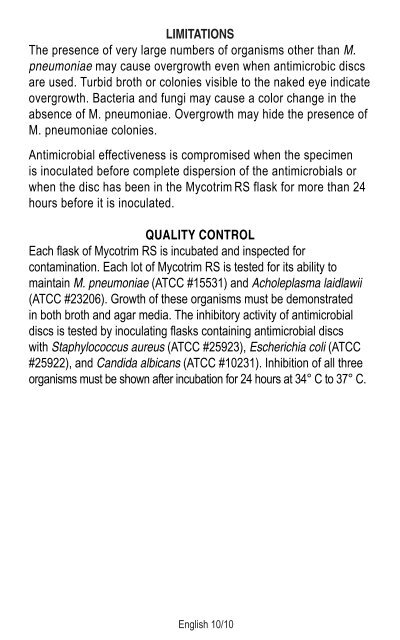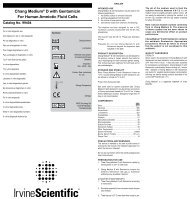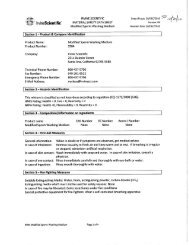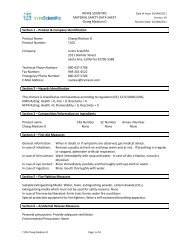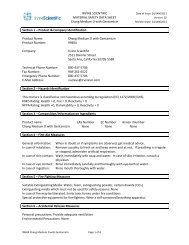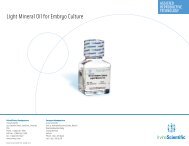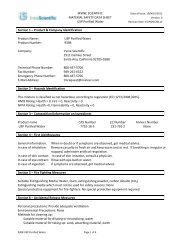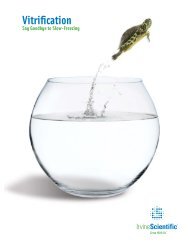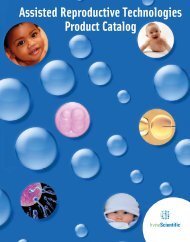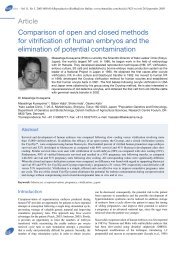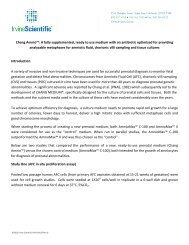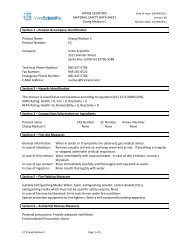Mycotrim® RS - Irvine Scientific
Mycotrim® RS - Irvine Scientific
Mycotrim® RS - Irvine Scientific
Create successful ePaper yourself
Turn your PDF publications into a flip-book with our unique Google optimized e-Paper software.
LIMITATIONS<br />
The presence of very large numbers of organisms other than M.<br />
pneumoniae may cause overgrowth even when antimicrobic discs<br />
are used. Turbid broth or colonies visible to the naked eye indicate<br />
overgrowth. Bacteria and fungi may cause a color change in the<br />
absence of M. pneumoniae. Overgrowth may hide the presence of<br />
M. pneumoniae colonies.<br />
Antimicrobial effectiveness is compromised when the specimen<br />
is inoculated before complete dispersion of the antimicrobials or<br />
when the disc has been in the Mycotrim <strong>RS</strong> flask for more than 24<br />
hours before it is inoculated.<br />
QUALITY CONTROL<br />
Each fl ask of Mycotrim <strong>RS</strong> is incubated and inspected for<br />
contamination. Each lot of Mycotrim <strong>RS</strong> is tested for its ability to<br />
maintain M. pneumoniae (ATCC #15531) and Acholeplasma laidlawii<br />
(ATCC #23206). Growth of these organisms must be demonstrated<br />
in both broth and agar media. The inhibitory activity of antimicrobial<br />
discs is tested by inoculating fl asks containing antimicrobial discs<br />
with Staphylococcus aureus (ATCC #25923), Escherichia coli (ATCC<br />
#25922), and Candida albicans (ATCC #10231). Inhibition of all three<br />
organisms must be shown after incubation for 24 hours at 34° C to 37° C.<br />
English 10/10


